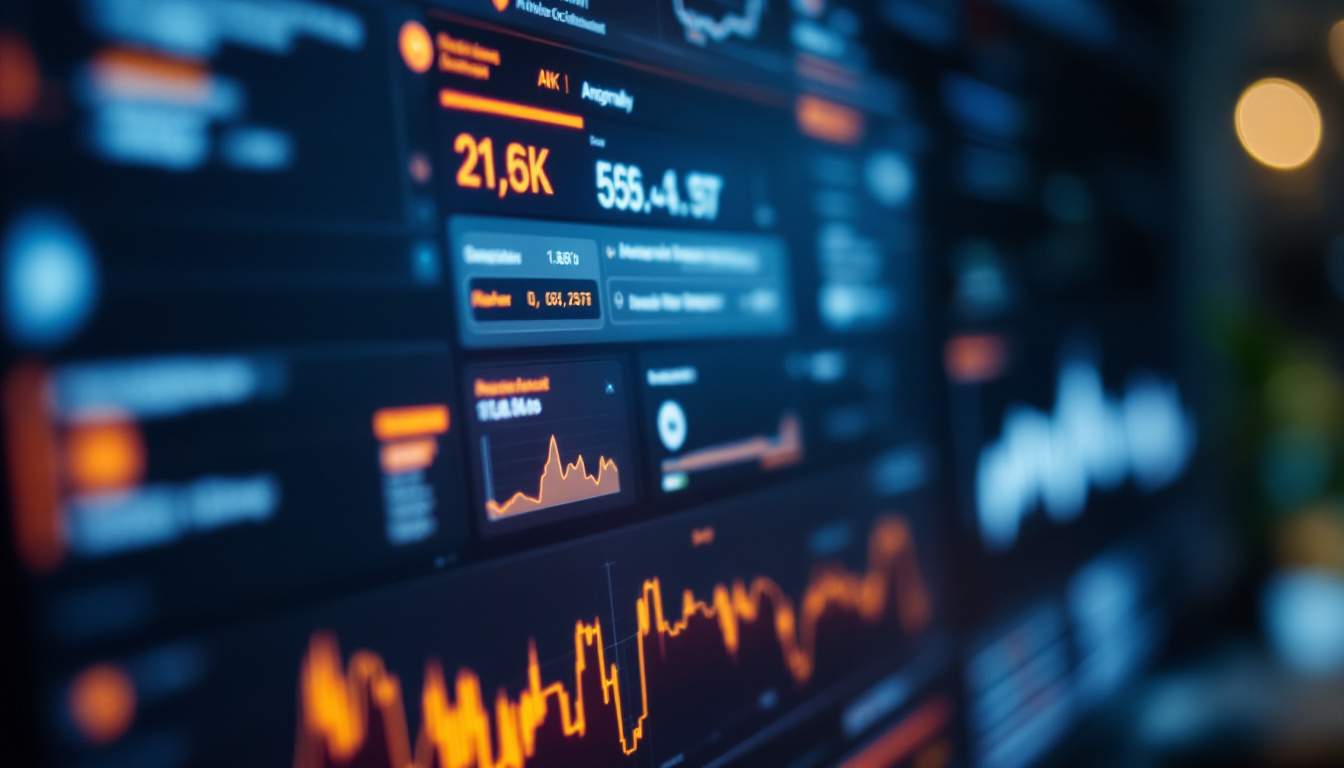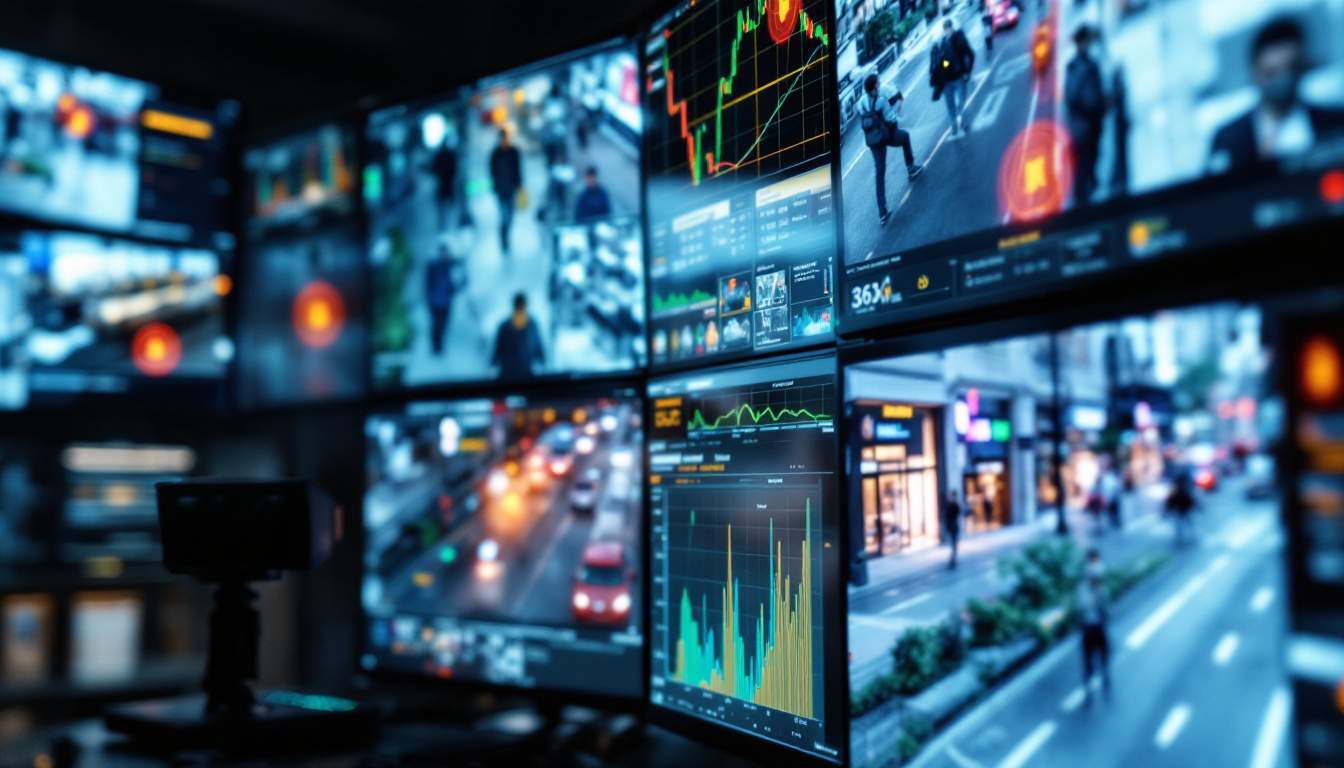Anomaly Detection: AI Video Analytics Explained
Anomaly detection is a critical aspect of artificial intelligence (AI) video analytics. It refers to the process of identifying unusual patterns or behaviors that deviate from the norm in video data. This technology is increasingly being used in various sectors, such as surveillance, healthcare, transportation, and retail, to enhance security, improve operations, and gain valuable insights.
The primary objective of anomaly detection in AI video analytics is to detect irregularities or deviations in video streams that may indicate potential threats or problems. This is achieved through a combination of machine learning algorithms and statistical techniques that analyze video data in real-time or retrospectively to identify unusual patterns or behaviors.
Understanding Anomaly Detection
Anomaly detection is a complex process that involves several steps, from data collection and preprocessing to feature extraction, model training, and anomaly identification. The process begins with the collection of video data, which is then preprocessed to remove noise and irrelevant information. This is followed by feature extraction, where relevant features or attributes are extracted from the preprocessed data for further analysis.

The next step is model training, where machine learning algorithms are used to learn the normal patterns or behaviors in the data. Once the model is trained, it can be used to identify anomalies or deviations from the normal patterns. The identified anomalies are then analyzed and validated to determine their significance and potential impact.
Types of Anomalies
Anomalies can be broadly categorized into three types: point anomalies, contextual anomalies, and collective anomalies. Point anomalies are individual data points that deviate significantly from the rest of the data. Contextual anomalies, on the other hand, are data points that deviate from the norm when considered in a specific context. Collective anomalies refer to a collection of data points that collectively deviate from the norm, even though the individual data points may not be anomalies.
Understanding the type of anomaly is crucial for effective anomaly detection. It helps in choosing the right anomaly detection technique and interpreting the results correctly. For instance, if the anomalies are mostly point anomalies, then univariate anomaly detection techniques may be sufficient. However, if the anomalies are contextual or collective, then multivariate or time-series anomaly detection techniques may be required.
Challenges in Anomaly Detection
Anomaly detection in AI video analytics is not without its challenges. One of the main challenges is the high dimensionality of video data. Video data is typically high-dimensional, with each frame consisting of thousands or even millions of pixels. This high dimensionality makes it difficult to extract relevant features and identify anomalies.
Another challenge is the lack of labeled data for training the machine learning models. Most video data is unlabeled, meaning that the normal and anomalous patterns are not known beforehand. This makes it difficult to train the models and evaluate their performance. Furthermore, the definition of what constitutes an anomaly can vary depending on the context, adding another layer of complexity to the anomaly detection process.
Techniques for Anomaly Detection
There are several techniques for anomaly detection in AI video analytics, ranging from statistical methods to machine learning and deep learning techniques. Statistical methods, such as the Z-score method and the Grubbs' test, are simple and effective for detecting point anomalies. However, they may not be suitable for detecting contextual or collective anomalies, which require more sophisticated techniques.
Machine learning techniques, such as clustering, classification, and regression, are commonly used for anomaly detection. Clustering techniques, such as K-means and DBSCAN, group similar data points together and identify the data points that do not belong to any group as anomalies. Classification techniques, such as SVM and decision trees, classify the data points into normal and anomalous classes based on their features. Regression techniques, such as linear regression and logistic regression, model the relationship between the features and identify the data points that deviate from the model as anomalies.
Deep Learning Techniques
Deep learning techniques, such as convolutional neural networks (CNNs) and recurrent neural networks (RNNs), are increasingly being used for anomaly detection in AI video analytics. CNNs are particularly effective for processing video data, as they can automatically extract relevant features from the raw pixel values. RNNs, on the other hand, are effective for processing sequential data, making them suitable for detecting temporal anomalies.
Autoencoders, a type of neural network, are also commonly used for anomaly detection. An autoencoder is trained to reconstruct its input data, and the reconstruction error is used as a measure of anomaly. The idea is that the autoencoder will be able to reconstruct normal data accurately, but will struggle to reconstruct anomalous data, resulting in a high reconstruction error.
Hybrid Techniques
Hybrid techniques, which combine different anomaly detection techniques, are also gaining popularity. These techniques aim to leverage the strengths of different techniques and overcome their limitations. For instance, a hybrid technique may combine a statistical method for initial anomaly detection and a machine learning technique for further analysis and validation.
Another example of a hybrid technique is the combination of supervised and unsupervised learning. In this approach, unsupervised learning is used to learn the normal patterns in the data, and supervised learning is used to learn the anomalous patterns. This approach can be effective when there is a small amount of labeled data available for training.
Applications of Anomaly Detection in AI Video Analytics
Anomaly detection in AI video analytics has a wide range of applications, from surveillance and security to healthcare and transportation. In surveillance and security, anomaly detection can be used to detect suspicious activities, such as intrusions, thefts, and vandalism. In healthcare, it can be used to monitor patients' behaviors and detect abnormal behaviors that may indicate health problems.

In transportation, anomaly detection can be used to monitor traffic patterns and detect abnormal traffic conditions, such as congestion and accidents. In retail, it can be used to monitor customer behaviors and detect unusual behaviors, such as shoplifting. In manufacturing, it can be used to monitor production processes and detect anomalies that may indicate quality issues or equipment failures.
Surveillance and Security
In the field of surveillance and security, anomaly detection plays a crucial role. It allows for the identification of unusual activities or behaviors that could potentially pose a threat. For instance, in a video surveillance system, anomaly detection algorithms can identify a person loitering in a restricted area, a vehicle moving in the wrong direction, or an unattended bag in a public place. These anomalies can then trigger alerts, allowing security personnel to take appropriate action.
Furthermore, with the advent of smart cities, anomaly detection in video analytics is becoming increasingly important. It can help in monitoring public spaces, detecting incidents of violence, tracking crowd movements, and managing traffic. By detecting anomalies in real-time, authorities can respond swiftly, ensuring public safety and security.
Healthcare
In healthcare, anomaly detection in AI video analytics can be used for patient monitoring and care. For instance, in a hospital setting, video analytics can monitor patients' movements and behaviors, detecting any unusual activity that may indicate a health issue. This could include a patient falling, showing signs of agitation, or deviating from their usual routine.
Moreover, in the context of elderly care, anomaly detection can be particularly useful. With the help of video analytics, caregivers can monitor the daily activities of the elderly, detecting any deviations that might indicate a health problem. This could include changes in sleep patterns, mobility, or eating habits. By detecting these anomalies early, appropriate intervention can be provided, improving the quality of care and potentially saving lives.
Future of Anomaly Detection in AI Video Analytics
The future of anomaly detection in AI video analytics looks promising, with advancements in technology and increasing adoption across various sectors. With the advent of 5G and edge computing, real-time anomaly detection is becoming more feasible, enabling faster response times and improved decision-making.

Furthermore, advancements in machine learning and deep learning are leading to more accurate and efficient anomaly detection algorithms. These algorithms are not only capable of detecting more complex anomalies but also learning and adapting over time, improving their performance. With the increasing availability of video data and the growing demand for intelligent video analytics, the role of anomaly detection is set to become even more critical in the future.
Real-time Anomaly Detection
Real-time anomaly detection is one of the key trends in AI video analytics. With the advent of 5G and edge computing, the processing of video data and the detection of anomalies can be done in real-time, enabling faster response times and improved decision-making. This is particularly important in applications such as surveillance and security, where timely detection and response can prevent potential threats or problems.
Real-time anomaly detection also has significant implications for other sectors, such as healthcare and transportation. In healthcare, real-time anomaly detection can enable proactive patient monitoring and care, improving health outcomes. In transportation, it can enable real-time traffic management, improving traffic flow and reducing congestion.
Adaptive Anomaly Detection
Adaptive anomaly detection is another key trend in AI video analytics. This involves the use of machine learning and deep learning algorithms that can learn and adapt over time, improving their performance. These algorithms can learn from new data, adjust their parameters, and update their models, enabling them to detect new types of anomalies and adapt to changes in the data.
Adaptive anomaly detection is particularly useful in dynamic environments, where the data and the underlying patterns can change over time. It can also be useful in situations where the definition of an anomaly can vary depending on the context. By learning and adapting over time, these algorithms can provide more accurate and robust anomaly detection, enhancing the effectiveness of AI video analytics.


